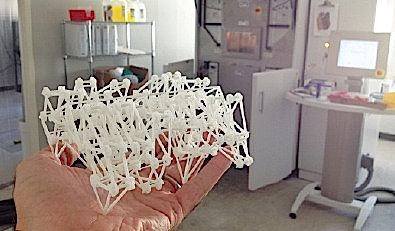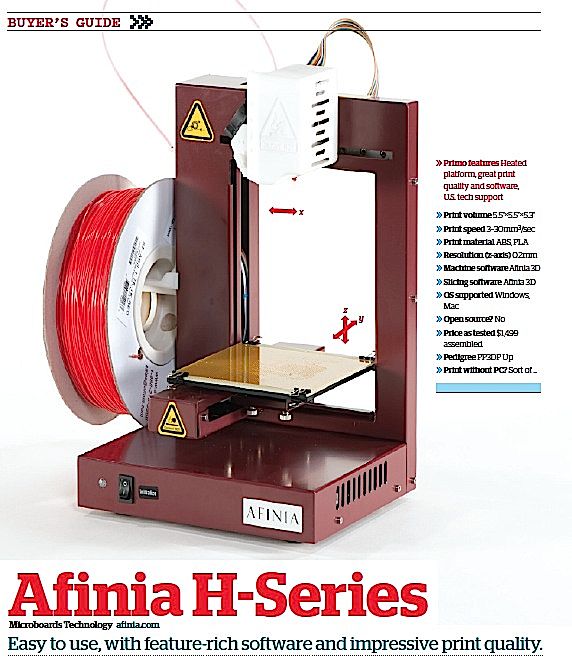Ultimate Guide to 3D Printing

Best 3D printing guide
3D printing allows you to make a small complex object from a digitally composed file using a 3D printer. However 3D printing technology is changing so fast that Cool Tools can’t recommend a specific printer. The best we can do is to point you to people who are seriously tracking this corner of the technium.
By far the best guide to the rapidly emerging world of 3D printing is this special issue of Make magazine. This timely guide will spell out the differences in 15 home printers now available, and steer to you the best stock materials to use, the design software options you have, and even how to use 3D print services instead of buying your own (soon to be outdated) machine. Included is a whole chapter on the brand new art of how to scan existing objects so they can be replicated. Their comprehensively researched and test 3D printer buyer’s guide is worth thousands of dollars in savings. The 114-page guide is impressively well done, brilliantly illustrated with diagrams and instructive photos, tons of tips and inspiring projects, and will answer 99% of the first questions any beginner will have, while constantly pointing you to the websites and experts generating even more recent information. I hope they keep this excellent tool updated. (Mark Frauenfelder, now editor of Cool Tools, was editor-in-chief of Make).
— KK
Excerpts:
A Strandbeest mechanism by Theo Jansen, printed in nylon on an EOS selective laser sintering (SLS) machine at Shapeways headquarters in New York. Dust it off and it’s ready to walk.
*
A word of warning: when buying a turnkey printer, be wary of “razor vs. blades” business models. 3D printers exist that are seemingly cheap, but which require proprietary filament cartridges, where the consumable filament costs two to three times the going market rates.
*
Generating STL files — STL files are the lingua franca of the 3D printing world. If an application can export a 3D model as an STL file, then that STL file can be sliced and printed. STL files can be generated using a CAD program. SketchUp is quite popular, as are a number of open source 3D modelers. On Mac OS X, Autodesk has released Inventor Fusion, which combines significant power with a relatively easy-to-use package. Both are free.
*
Ponoko offers 3D printing in a wide range of materials, from plastics and ceramics to stainless steel, gold plate, and Z Corp plasters. They also offer laser cutting and CNC routing in a huge variety of materials, so you can supplement your 3D-printed project with other custom parts. Prints from Ponoko are generally very good quality and reasonably priced, but their pricing structure and system for uploading models are confusing. They do have a very good support staff who will go above and beyond to help you with any questions. Ponoko operates several regional production facilities, so printing and shipping times vary.
*
PLA (polylactic acid or polylactide) is a biodegradable plastic typically made from corn or potatoes. PLA filament is extruded at a lower temperature of 160°C–220°C and does not require a heated bed (painter’s tape is just fine). When heated, PLA smells a bit like sweet, toasted corn. PLA tends to be stiffer than ABS. While PLA does not require a heated bed, it can warp a bit during cooling, something that a heated bed can greatly improve. Note that there is a “flexible PLA” variant that, while trickier to use, will result in objects that are squishy.
*
Slicing/CAM Software — Once you have a manifold, error-free 3D model, it must be converted into specific toolpath instructions that tell the printer where to move the hot end, when to move it, and whether or not to extrude plastic along the way. This process is sometimes referred to as skeining or slicing. The standard format for these instructions is a simple programming language called G-code. Historically, most printers have relied on the open source Skeinforge engine for preparing G-code from model files. Recently, however, alternative slicing programs have started appearing, most notably Slic3r, which has been slowly overtaking Skeinforge as the tool of choice.
02/25/13
Ultimate Guide to 3D Printing $7












